-
 Bitcoin
Bitcoin $93,943.7603
-0.41% -
 Ethereum
Ethereum $1,773.2137
-1.80% -
 Tether USDt
Tether USDt $0.9998
-0.01% -
 XRP
XRP $2.0961
-2.64% -
 BNB
BNB $594.6411
-0.06% -
 Solana
Solana $142.7596
-1.39% -
 USDC
USDC $1.0000
0.00% -
 Dogecoin
Dogecoin $0.1659
-3.07% -
 TRON
TRON $0.2441
-1.84% -
 Cardano
Cardano $0.6506
-2.54% -
 Sui
Sui $3.2012
-7.51% -
 Chainlink
Chainlink $13.3057
-3.56% -
 Avalanche
Avalanche $19.4416
-0.68% -
 UNUS SED LEO
UNUS SED LEO $8.7236
1.19% -
 Stellar
Stellar $0.2548
-3.44% -
 Toncoin
Toncoin $2.9787
-0.37% -
 Shiba Inu
Shiba Inu $0.0...01244
-1.94% -
 Hedera
Hedera $0.1702
-2.20% -
 Bitcoin Cash
Bitcoin Cash $352.4717
-0.56% -
 Hyperliquid
Hyperliquid $19.6286
-2.65% -
 Litecoin
Litecoin $81.9195
-7.52% -
 Polkadot
Polkadot $3.8566
-1.91% -
 Dai
Dai $1.0000
0.00% -
 Monero
Monero $287.3544
4.00% -
 Bitget Token
Bitget Token $4.3075
0.19% -
 Ethena USDe
Ethena USDe $1.0001
-0.02% -
 Pi
Pi $0.5789
-2.25% -
 Pepe
Pepe $0.0...07661
-4.14% -
 Bittensor
Bittensor $358.9078
-0.29% -
 Uniswap
Uniswap $4.8671
-2.68%
What is the gas fee of blockchain digital currency?
Blockchain gas fees, paid to miners, vary based on transaction complexity and network congestion, impacting transaction costs and speed across different blockchains.
Mar 12, 2025 at 08:05 pm
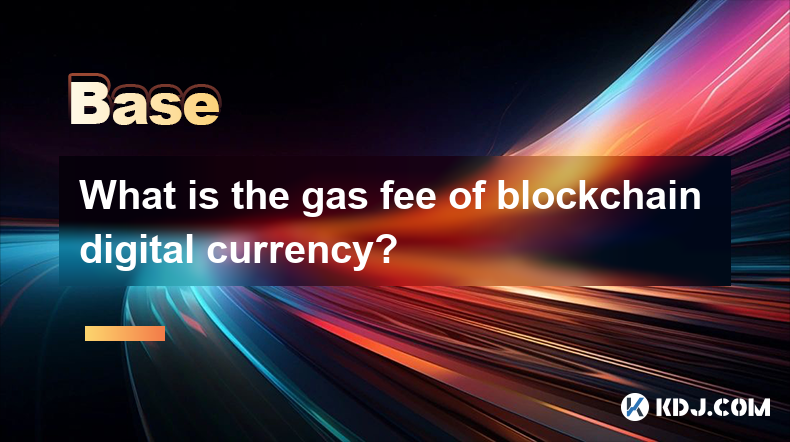
Key Points:
- Gas fees are transaction fees paid to miners or validators on a blockchain network to process transactions.
- The amount of gas required varies depending on the complexity of the transaction.
- Gas prices fluctuate based on network congestion and demand.
- Different blockchains have different gas fee mechanisms and pricing models.
- Understanding gas fees is crucial for budgeting and efficiently using blockchain networks.
What is the gas fee of blockchain digital currency?
Gas fees are essentially the transaction fees paid to the miners or validators on a blockchain network to incentivize them to process your transaction. Think of it as a tip you pay for their computational work. Without these fees, miners wouldn't be motivated to include your transaction in a block, and your transaction would remain unconfirmed. This applies to many blockchains, most notably Ethereum.
How are gas fees determined?
The gas fee is calculated based on two primary factors: gas used and gas price. Gas used represents the computational resources required to process your transaction. A simple transaction like sending ETH requires less gas than a complex smart contract interaction. The gas price, expressed in Gwei (a billionth of an Ether), reflects the current market demand for processing power. Higher demand leads to higher gas prices.
What factors influence gas prices?
Several factors contribute to gas price fluctuations. Network congestion is a major driver; when many users are simultaneously trying to execute transactions, the demand for processing power increases, driving up gas prices. The type of transaction also plays a role; complex transactions consume more gas and therefore incur higher fees. Finally, the overall market sentiment and activity around the specific blockchain can also influence gas prices.
How do I estimate gas fees before a transaction?
Most cryptocurrency wallets and exchanges provide gas fee estimations before you confirm a transaction. These estimations are usually dynamic and update based on current network conditions. It's crucial to review these estimates carefully before finalizing your transaction to avoid unexpected costs. Ignoring these estimates can result in your transaction failing to be processed.
What happens if I don't pay enough gas?
If you don't pay enough gas to cover the computational cost of your transaction, the miners will likely reject it. Your transaction will remain pending, and your cryptocurrency will not be transferred. In some cases, you might even lose a small amount of cryptocurrency as a transaction fee for the attempt. It's vital to always have a buffer in your gas estimation.
Are gas fees the same across all blockchains?
No, gas fee mechanisms and pricing models differ significantly between blockchains. Ethereum, for example, uses a gas-based system, while other blockchains might employ different fee structures. Some blockchains use a fixed transaction fee, while others utilize a dynamic fee system based on network congestion. It's crucial to understand the specific fee structure of the blockchain you're using.
How can I reduce gas fees?
Several strategies can help you minimize gas fees. One is to choose off-peak times to conduct transactions, when network congestion is lower and gas prices are typically cheaper. You can also optimize your transaction to use less gas by simplifying the transaction's complexity if possible. Some blockchains offer layer-2 solutions to reduce transaction costs significantly.
What are layer-2 solutions and how do they affect gas fees?
Layer-2 solutions are technologies that operate on top of a base blockchain (like Ethereum) to enhance scalability and reduce transaction costs. They process transactions off-chain, significantly reducing the load on the main chain and, consequently, lowering gas fees. Popular layer-2 solutions include Optimism, Arbitrum, and Polygon. These solutions generally offer significantly cheaper transactions than the base layer.
Can I choose my gas price?
Most wallets and exchanges allow you to adjust your gas price. You can choose a higher gas price to ensure your transaction is processed quickly, or a lower gas price to save money, accepting a potentially longer processing time. However, setting the gas price too low risks your transaction being rejected. It's important to find a balance between speed and cost.
What are the implications of high gas fees?
High gas fees can make transactions prohibitively expensive, particularly for smaller transactions or users with limited funds. This can hinder the accessibility and usability of certain blockchains, especially for everyday users. High gas fees can also lead to network congestion and slow transaction times.
What are some examples of transactions with high gas fees?
Transactions involving complex smart contracts, such as those used in decentralized finance (DeFi) applications, often incur high gas fees. Minted NFTs often have high gas fees due to the computational complexity of creating and registering them on the blockchain. Large batch transactions also consume more gas and, hence, attract higher fees.
What are the units used for gas fees?
The unit used for gas is typically Gwei, which is one billionth of an Ether (ETH). While some blockchains might use different units, Gwei is the most common unit associated with gas fees, particularly on the Ethereum network. Gas fees are often displayed in Gwei and then converted to the native cryptocurrency of the blockchain.
How are gas fees different from transaction fees on other networks?
While the concept is similar – paying a fee for transaction processing – the implementation differs significantly across blockchains. Some networks have fixed transaction fees, while others, like Ethereum, utilize the gas-based model. The specific calculation methods and influencing factors also vary considerably.
Common Questions and Answers:
Q: What is Gwei? A: Gwei is a unit of Ether (ETH), specifically one billionth of an ETH. It's commonly used to express gas prices on the Ethereum network.
Q: Can gas fees be refunded? A: Generally, no. Gas fees are paid to miners for processing transactions and are not refundable, even if the transaction fails.
Q: How do I monitor gas prices? A: Many websites and tools provide real-time gas price tracking for various blockchains. Your cryptocurrency wallet might also display current gas price estimates.
Q: Are gas fees a barrier to entry for new users? A: Yes, high gas fees can be a significant barrier to entry, especially for users with limited funds or those unfamiliar with the complexities of gas price management.
Disclaimer:info@kdj.com
The information provided is not trading advice. kdj.com does not assume any responsibility for any investments made based on the information provided in this article. Cryptocurrencies are highly volatile and it is highly recommended that you invest with caution after thorough research!
If you believe that the content used on this website infringes your copyright, please contact us immediately (info@kdj.com) and we will delete it promptly.
- Bitcoin (BTC) Holds Above $94,000 as the Market Awaits the Fed's Decision
- 2025-05-06 20:15:12
- The Rise of Crypto Launchpads: How Pumpfun Dominates the Market and New Players Emerge
- 2025-05-06 20:15:12
- Hedera (HBAR) Holders Brace for Impact – Trillions Are Flooding On-Chain!
- 2025-05-06 20:10:14
- The internet has long promised freedom—freedom to connect, to create, and to share without boundaries.
- 2025-05-06 20:10:14
- VanEck Files to Launch the First-Ever Spot BNB ETF
- 2025-05-06 20:05:12
- The 4 Best Long-Term Crypto Opportunities in 2025: Web3 ai, Avalanche, Cardano, and Toncoin
- 2025-05-06 20:05:12
Related knowledge
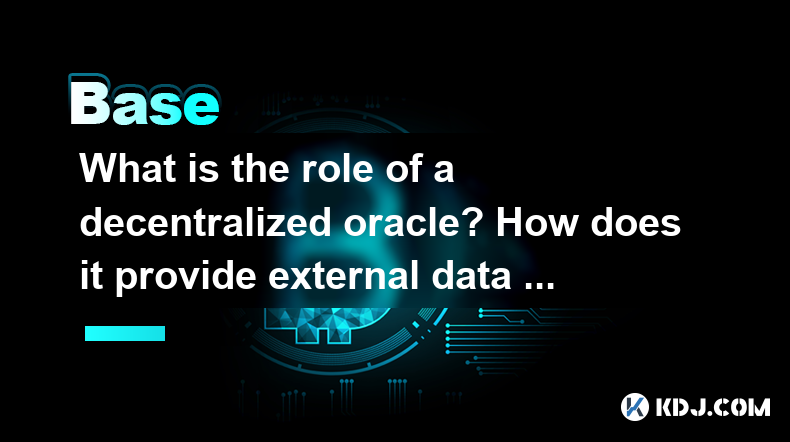
What is the role of a decentralized oracle? How does it provide external data to smart contracts?
May 06,2025 at 08:56pm
Decentralized oracles play a crucial role in the world of blockchain and smart contracts by serving as a bridge between the blockchain and the real world. Smart contracts are self-executing programs that run on the blockchain and are designed to automatically enforce the terms of an agreement. However, these contracts often require data from outside the...
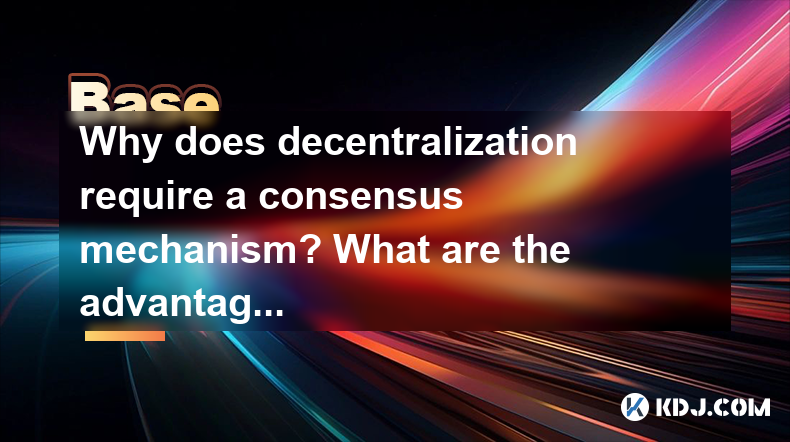
Why does decentralization require a consensus mechanism? What are the advantages and disadvantages of PoW and PoS?
May 06,2025 at 08:07pm
Decentralization in the cryptocurrency space refers to the distribution of power and control away from a central authority. This concept is fundamental to the ethos of many blockchain networks, which aim to create systems that are resistant to censorship, manipulation, and single points of failure. However, decentralization brings its own set of challen...

How does a decentralized network work? How do nodes reach consensus to ensure security?
May 06,2025 at 08:43pm
Decentralized networks form the backbone of many cryptocurrency systems, enabling secure, transparent, and direct transactions without the need for a central authority. Understanding how these networks operate and how nodes within them reach consensus is crucial for anyone interested in the world of cryptocurrencies. What is a Decentralized Network?A de...
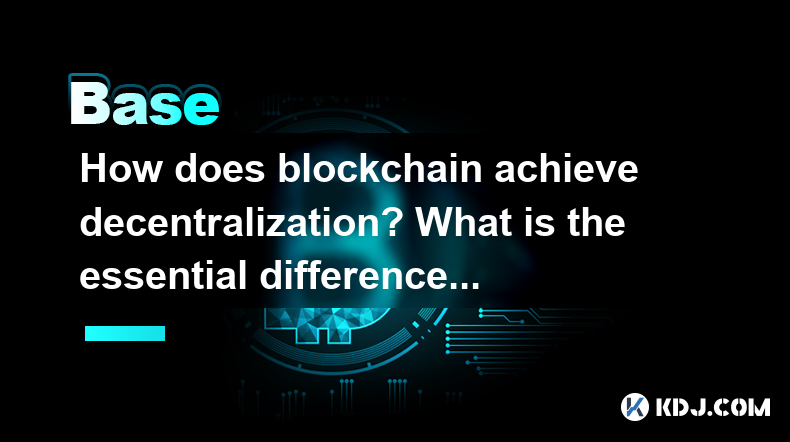
How does blockchain achieve decentralization? What is the essential difference between it and traditional centralized systems?
May 06,2025 at 07:00pm
Blockchain technology is fundamentally designed to achieve decentralization, a core feature that distinguishes it from traditional centralized systems. At its essence, decentralization in blockchain means that no single entity has control over the entire network. This is achieved through a distributed ledger that is maintained across a network of comput...

What is a Merkle tree? What role does it play in blockchain?
Apr 29,2025 at 07:42am
A Merkle tree, also known as a hash tree, is a data structure used to efficiently verify the integrity and consistency of large sets of data. In the context of blockchain, Merkle trees play a crucial role in ensuring the security and efficiency of the network. This article will explore what a Merkle tree is, how it works, and its specific role in blockc...
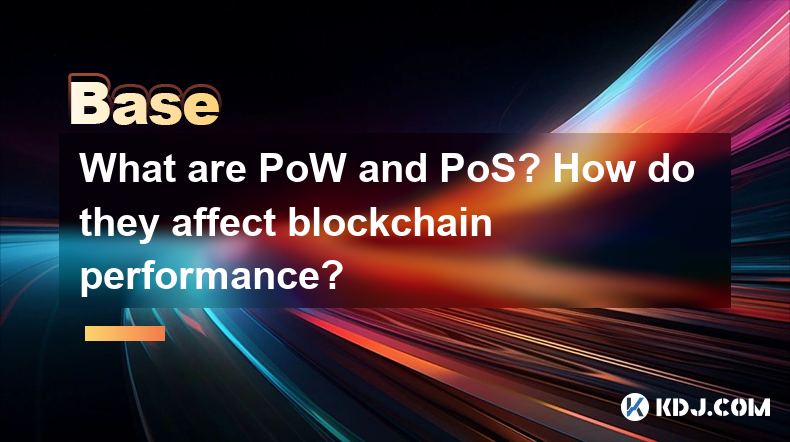
What are PoW and PoS? How do they affect blockchain performance?
Apr 28,2025 at 09:21am
Introduction to PoW and PoSIn the world of cryptocurrencies, the terms Proof of Work (PoW) and Proof of Stake (PoS) are frequently mentioned due to their critical roles in securing and maintaining blockchain networks. Both mechanisms are used to validate transactions and add them to the blockchain, but they operate on different principles and have disti...

What is the role of a decentralized oracle? How does it provide external data to smart contracts?
May 06,2025 at 08:56pm
Decentralized oracles play a crucial role in the world of blockchain and smart contracts by serving as a bridge between the blockchain and the real world. Smart contracts are self-executing programs that run on the blockchain and are designed to automatically enforce the terms of an agreement. However, these contracts often require data from outside the...

Why does decentralization require a consensus mechanism? What are the advantages and disadvantages of PoW and PoS?
May 06,2025 at 08:07pm
Decentralization in the cryptocurrency space refers to the distribution of power and control away from a central authority. This concept is fundamental to the ethos of many blockchain networks, which aim to create systems that are resistant to censorship, manipulation, and single points of failure. However, decentralization brings its own set of challen...

How does a decentralized network work? How do nodes reach consensus to ensure security?
May 06,2025 at 08:43pm
Decentralized networks form the backbone of many cryptocurrency systems, enabling secure, transparent, and direct transactions without the need for a central authority. Understanding how these networks operate and how nodes within them reach consensus is crucial for anyone interested in the world of cryptocurrencies. What is a Decentralized Network?A de...

How does blockchain achieve decentralization? What is the essential difference between it and traditional centralized systems?
May 06,2025 at 07:00pm
Blockchain technology is fundamentally designed to achieve decentralization, a core feature that distinguishes it from traditional centralized systems. At its essence, decentralization in blockchain means that no single entity has control over the entire network. This is achieved through a distributed ledger that is maintained across a network of comput...

What is a Merkle tree? What role does it play in blockchain?
Apr 29,2025 at 07:42am
A Merkle tree, also known as a hash tree, is a data structure used to efficiently verify the integrity and consistency of large sets of data. In the context of blockchain, Merkle trees play a crucial role in ensuring the security and efficiency of the network. This article will explore what a Merkle tree is, how it works, and its specific role in blockc...

What are PoW and PoS? How do they affect blockchain performance?
Apr 28,2025 at 09:21am
Introduction to PoW and PoSIn the world of cryptocurrencies, the terms Proof of Work (PoW) and Proof of Stake (PoS) are frequently mentioned due to their critical roles in securing and maintaining blockchain networks. Both mechanisms are used to validate transactions and add them to the blockchain, but they operate on different principles and have disti...
See all articles




















































































